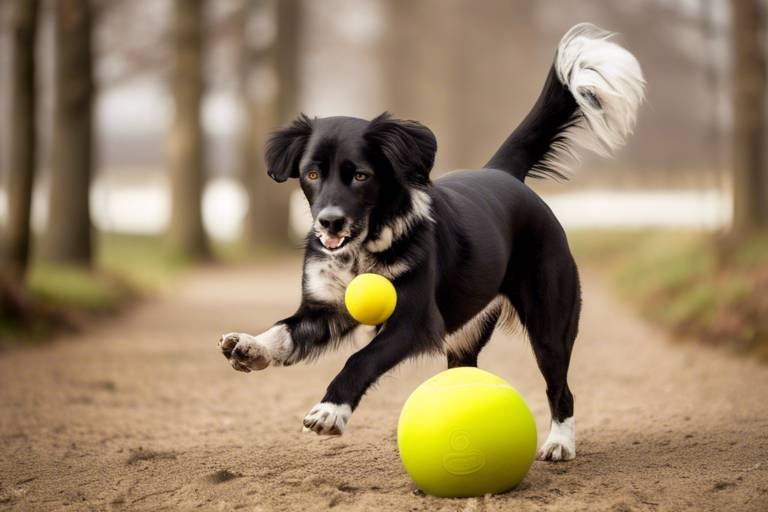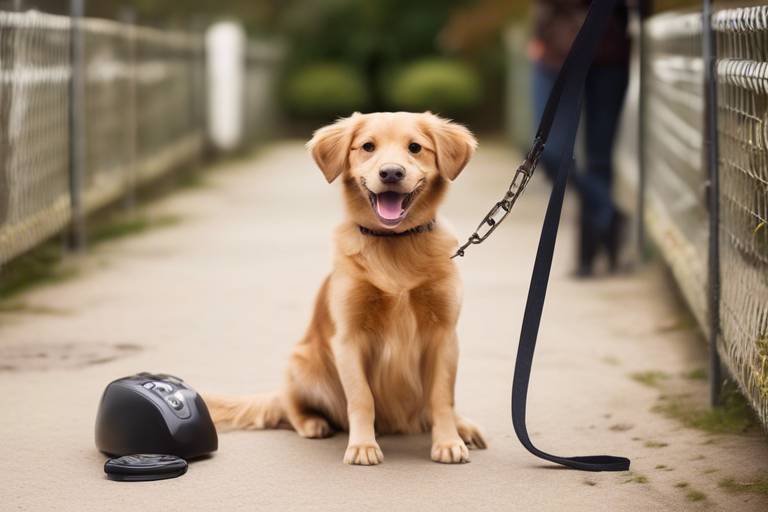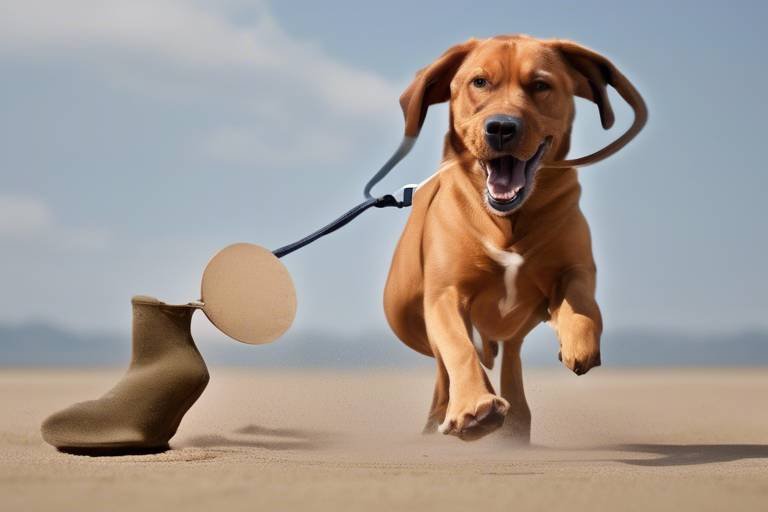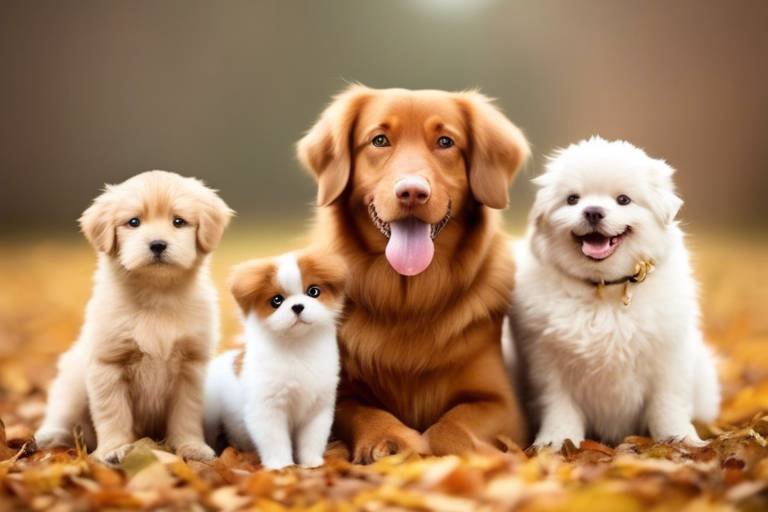How to Teach Your Pet to Shake Hands
Teaching your pet to shake hands is not just a cute party trick; it's an excellent way to strengthen your bond and provide your furry friend with some much-needed mental stimulation. Imagine the joy on your pet's face when they master this charming trick! It's like giving them a little badge of honor. Plus, it’s an impressive skill that can leave your friends and family in awe. So, let’s dive into the step-by-step journey of turning your pet into a paw-shaking pro!
Before diving into training, it's crucial to understand your pet's behavior. Every pet has a unique personality, and recognizing their body language can significantly enhance your training experience. For instance, a dog that wags its tail is generally excited and open to learning. On the other hand, if your pet seems anxious or distracted, it might be a sign that they need a different approach. By tuning into their signals, you can tailor your training strategy to fit their needs, leading to a more positive experience for both of you.
The environment plays a pivotal role in effective training. Imagine trying to concentrate in a noisy room filled with distractions; it’s tough, right? The same goes for your pet. Selecting a quiet, distraction-free space allows your pet to focus entirely on you. Look for a cozy corner in your home or even a serene spot in your backyard. The fewer distractions, the better your pet can concentrate on learning the new command. A calm environment sets the stage for success!
Having the right supplies at your fingertips can make the training process smoother and more enjoyable. Think of it as gathering your tools before starting a project. Here are some essentials you should have:
- Treats: Small, tasty rewards are fantastic motivators.
- Clicker: A clicker can help mark the desired behavior effectively.
- Toys: Your pet's favorite toy can also serve as a reward or distraction.
With these supplies ready, you’re all set to embark on your training adventure!
Breaking down the training into manageable steps is essential for your pet's understanding. Let's outline the process, ensuring each step is clear and engaging. Remember, patience is key here! Start by getting your pet's attention, then introduce the command, and gradually work through the steps.
The first step in teaching your pet to shake hands is capturing their attention. Use treats or their favorite toy to engage them before introducing the command. It’s like trying to get a friend’s attention in a crowded room—make sure they’re focused on you first!
Once your pet is focused, it’s time to introduce the command. Clearly saying “shake” while demonstrating the action helps your pet associate the word with the behavior you want them to learn. Think of it as showing them a new dance move; they need to see it before they can do it!
Positive reinforcement is the backbone of successful training. Rewarding your pet with treats or praise each time they attempt the shake hands trick encourages them to repeat the behavior. Imagine how motivated you’d feel if someone cheered you on every time you tried something new! This approach not only builds their confidence but also makes the learning process enjoyable.
Training may come with its fair share of challenges. Distractions, lack of interest, or even confusion about the command can arise. But don't worry! Here are some common issues and practical solutions:
- Distractions: Move to a quieter space if your pet seems distracted.
- Lack of Interest: Use higher-value treats or toys to spark their enthusiasm.
- Confusion: Go back a step if your pet seems confused; sometimes, slowing down helps.
By addressing these challenges head-on, you can keep your pet engaged and motivated throughout the process.
Consistency and patience are vital for effective training. Regular practice and a calm demeanor will help reinforce the behavior, ensuring your pet learns to shake hands reliably over time. Think of it like building a muscle; the more you practice, the stronger it gets! So, keep those training sessions short and fun, and remember to celebrate every little success along the way!
Q: How long will it take for my pet to learn to shake hands?
A: The time it takes can vary based on your pet's age, breed, and personality. With consistent practice, many pets can learn this trick within a week or two.
Q: What if my pet doesn’t respond to treats?
A: Every pet is different! If treats aren’t motivating, try using their favorite toy or some enthusiastic praise.
Q: Can I teach my cat to shake hands too?
A: Absolutely! Cats can learn tricks just like dogs, though they might require a different approach. Use patience and find what motivates your cat!

Understanding Your Pet's Behavior
Before diving into the fun world of teaching your pet to shake hands, it's crucial to take a moment to understand their behavior. Just like humans, every pet has its unique personality and body language. By tuning into these signals, you can create a more effective and enjoyable training experience. Have you ever noticed how your dog wags its tail or how your cat purrs when they're happy? These are clear indicators of their emotional state. Recognizing these signs can help you gauge your pet's readiness for training.
Pets communicate primarily through body language, and being observant can make a world of difference. For instance, if your dog is panting heavily or has its ears pinned back, it might be feeling anxious or overstimulated. On the other hand, a relaxed posture with a wagging tail usually indicates that your furry friend is in a good mood and ready to learn. Understanding these cues will allow you to tailor your training sessions to fit their comfort level, ensuring a positive experience for both of you.
Moreover, different pets react differently to various stimuli. For example, while some dogs might be motivated by treats, others may respond better to praise or playtime. It's essential to observe what excites or calms your pet. To help you understand better, here's a quick reference table:
| Behavior | Possible Interpretation | Suggested Action |
|---|---|---|
| Wagging Tail | Happy or Excited | Use treats or toys to engage |
| Panting | Stressed or Overheated | Take a break and provide water |
| Ears Pinned Back | Fearful or Anxious | Calmly reassure your pet |
| Play Bow | Inviting Play | Engage in a fun activity |
In addition to recognizing physical cues, it's also important to understand your pet's past experiences. If your dog has had negative encounters with training in the past, they might be hesitant to participate. Building trust is key. Start with short, positive sessions and gradually increase the complexity of the commands as your pet becomes more comfortable. This approach not only strengthens your bond but also creates a safe learning environment.
Remember, every pet is different, and what works for one might not work for another. Be patient and flexible in your training methods. By taking the time to understand your pet's behavior, you're setting the stage for a successful training experience that is both rewarding and enjoyable. So, are you ready to embark on this exciting journey of teaching your pet to shake hands?
- Q: How long should each training session be?
A: Aim for sessions of 5-10 minutes to keep your pet engaged without overwhelming them. - Q: What if my pet doesn't seem interested?
A: Try different rewards like toys or praise, and ensure the environment is free of distractions. - Q: Can older pets learn new tricks?
A: Absolutely! With patience and the right approach, older pets can learn just as effectively as younger ones.

Choosing the Right Environment
When it comes to teaching your pet the delightful trick of shaking hands, the environment plays a crucial role in the success of your training sessions. Imagine trying to concentrate on a task in a noisy, chaotic room—it's nearly impossible! Similarly, your furry friend needs a calm and quiet space to focus on learning. A distraction-free environment allows your pet to hone in on you, making it easier for them to absorb the new command without the interference of outside stimuli.
Consider starting your training sessions in a familiar area of your home where your pet feels comfortable. This could be the living room, a quiet corner of the yard, or even a cozy spot in your bedroom. The key is to choose a place where your pet can feel secure and relaxed. If you have a particularly excitable pet, it might be beneficial to limit their access to windows or areas where they can see other animals or people passing by. You want to eliminate anything that might divert their attention away from you.
Additionally, the time of day can impact your training sessions. Early morning or late evening might be the best times to train, as your pet is likely to be more calm and less stimulated by the hustle and bustle of daily activities. If you have young children or other pets, try to schedule your training when the household is quieter. This way, your pet can focus solely on you and the task at hand.
In some cases, it might even be helpful to train in different environments as your pet becomes more proficient at shaking hands. This can help them generalize the behavior, making it easier for them to perform the trick in various situations—like at the park or during family gatherings. Just remember to start in a low-distraction area and gradually introduce new locations as your pet gains confidence.
To sum it up, choosing the right environment is about creating a space where your pet can thrive during training. Here are a few tips to keep in mind:
- Select a quiet, familiar space.
- Avoid distractions like loud noises or other pets.
- Consider the best time of day for training.
- Gradually introduce new environments as your pet learns.
By ensuring a suitable training environment, you're setting your furry friend up for success, making the process of learning to shake hands not only effective but also enjoyable for both of you!
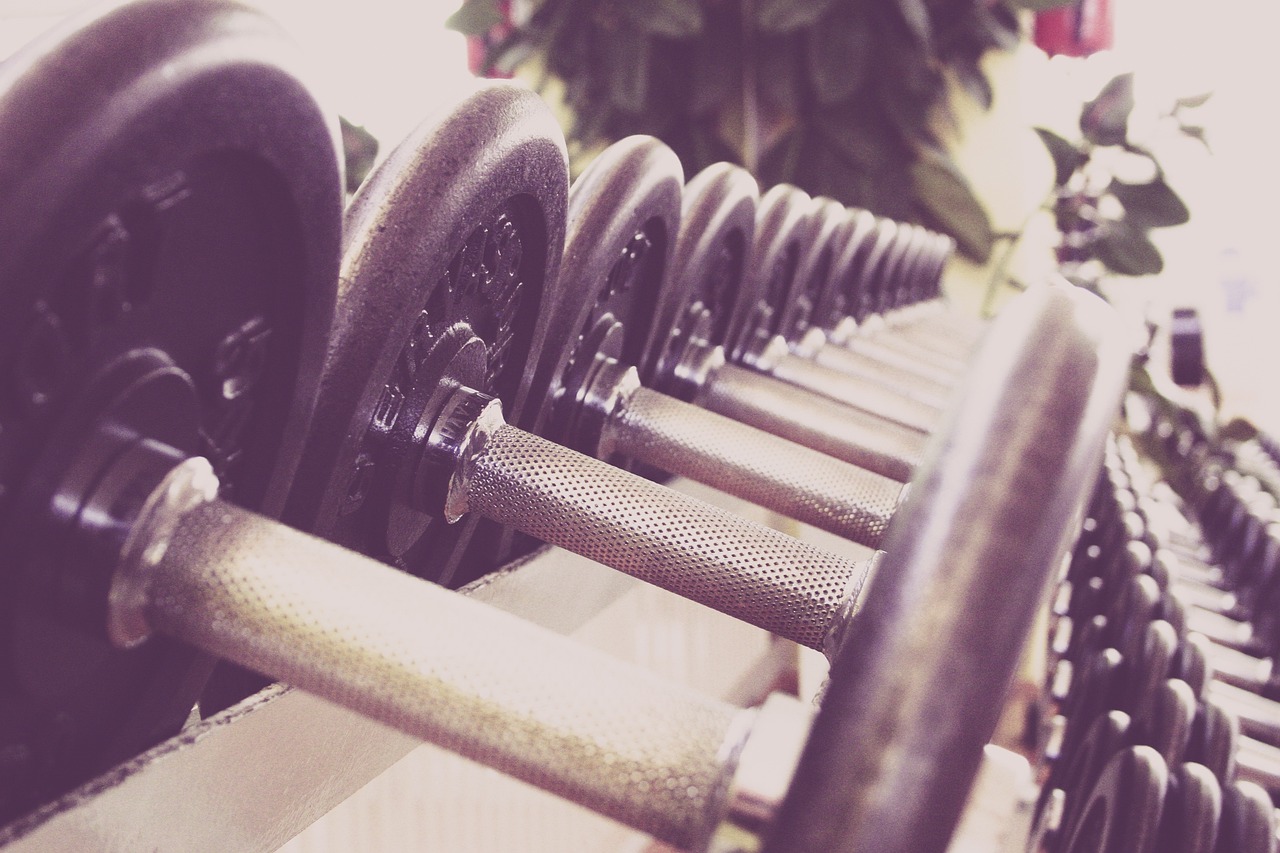
Gathering Training Supplies
Before diving into the fun world of teaching your pet to shake hands, it's crucial to gather the right training supplies. Think of this as assembling your toolkit for a DIY project; having the right tools can make all the difference! The essentials you'll need include treats, a clicker (if you’re using clicker training), and perhaps a favorite toy to keep your furry friend engaged.
When selecting treats, consider your pet's preferences. Some pets may go wild for soft, chewy treats, while others might prefer crunchy ones. The key is to choose something that excites them and is small enough for quick consumption. You want to ensure that they can focus on the training without being distracted by a large treat in their mouth!
Here's a quick overview of the supplies you might want to consider:
| Item | Description |
|---|---|
| Treats | Small, tasty morsels that your pet loves. |
| Clicker | A small device that makes a clicking sound to mark desired behaviors. |
| Toy | A favorite toy to keep your pet engaged and motivated. |
In addition to these primary items, you might also want to have a leash handy, especially if your pet tends to wander off during training sessions. A leash can help maintain focus and keep your pet close by, making it easier to guide them through the learning process.
Finally, don’t forget about your own comfort! Make sure you’re in a comfortable position where you can easily interact with your pet. Whether you’re sitting on the floor or standing, your body language plays a significant role in how your pet perceives the training session. Remember, your energy and enthusiasm will be contagious, so make sure you’re ready to have some fun!

Step-by-Step Training Process
Teaching your pet to shake hands is not just about impressing your friends; it's a fantastic way to strengthen the bond between you and your furry companion. This process can be broken down into a series of manageable steps that make it easier for your pet to grasp the concept. Let’s dive into the details!
The first step in this exciting journey is to get your pet's attention. Imagine trying to have a conversation with someone who is distracted by their phone; it just doesn't work, right? Similarly, you want to ensure your pet is focused on you. Use their favorite treat or toy to engage them. Once they are looking at you with curiosity, you’re ready to move on.
Next, it’s time to introduce the command. This is where you’ll say the word “shake” while gently lifting their paw. It’s crucial to say the command clearly and enthusiastically. Think of it like teaching a child their first word; your excitement will be contagious! As you say the command, gently guide their paw into your hand. This helps them associate the action with the word you’re using.
Now comes the fun part: using positive reinforcement. Every time your pet successfully lifts their paw, reward them immediately with a treat or lots of praise. This creates a positive association with the action. Imagine if every time you did something right, you received a cookie; you'd be eager to keep doing it! Make sure to keep the rewards consistent and enthusiastic. Over time, your pet will start to understand that lifting their paw is a way to earn those tasty treats.
As you progress, you might want to gradually reduce the amount of guidance you provide. Instead of physically lifting their paw, try just saying the command and waiting for them to respond. This is where patience becomes key. If they seem confused or uninterested, don’t hesitate to go back a step. Training is a journey, not a race!
It's also important to train in short sessions, ideally around 5 to 10 minutes. This keeps your pet engaged without overwhelming them. Think of it as a quick coffee break; you want it to be refreshing, not exhausting! After a session, let them play or relax so they can process what they’ve learned.
Finally, remember to maintain consistency. Use the same command and hand gesture every time you practice. This will help your pet understand what you expect from them. If you mix things up too much, it can lead to confusion. Consistency is like a road map for your pet, guiding them toward the destination of successfully shaking hands!
In summary, the for teaching your pet to shake hands involves:
- Getting their attention with treats or toys
- Introducing the command while demonstrating the action
- Using positive reinforcement to encourage the behavior
- Gradually reducing guidance as they learn
- Training in short, engaging sessions
- Maintaining consistency in commands and gestures
With these steps, you’ll be well on your way to having a pet that can shake hands like a pro! Remember, the journey of training is just as important as the destination. Enjoy the process and cherish the moments spent together!
Q: How long will it take for my pet to learn to shake hands?
A: Every pet learns at their own pace. Some may pick it up in a few sessions, while others might take a couple of weeks. Patience is key!
Q: What if my pet doesn’t seem interested in learning?
A: Make sure you’re using high-value treats that your pet loves. You can also try different locations or times of day to see when they are most engaged.
Q: Can I teach this trick to any type of pet?
A: Yes! While dogs are the most common pets to learn tricks, many other animals can be trained as well. Just be sure to adjust your methods to suit their unique personalities and learning styles.
Getting Your Pet's Attention
Teaching your pet to shake hands begins with a crucial first step: capturing their attention. Imagine trying to teach a child a new game while they're busy playing with their toys—it's just not going to work! The same principle applies to your furry friend. If your pet is distracted or uninterested, they won't be able to focus on learning this delightful trick. So, how do you ensure your pet is all ears and ready to engage?
One effective method is to use their favorite treats or toys. Pets are motivated by rewards, and if they see something they love, their curiosity will peak. Start by choosing a quiet space where you can minimize distractions. Once you’re in a calm environment, hold a treat in your hand and let your pet see and smell it. This will immediately grab their attention and signal that something fun is about to happen!
Here’s a little trick: you can also use a clicker if you have one. The sound of the clicker can be a great way to capture your pet's focus. When they hear that sound, they’ll associate it with a reward, making them more likely to pay attention. If you decide to use a clicker, be sure to click it right before giving them the treat. This helps them connect the dots between the action and the reward in their mind.
Another approach is to engage them with their favorite toy. If your pet loves to play fetch or tug-of-war, use that to your advantage. Get them excited and involved with the toy, and then transition into the training session. By doing this, you’re not only getting their attention but also making them feel good and energized about the training process.
Lastly, be sure to maintain a cheerful and enthusiastic demeanor. Your energy is contagious! If you’re excited about teaching them, your pet will likely mirror that enthusiasm. Use a lively tone and encourage your pet with phrases like “Good boy!” or “Yes, that’s it!” This creates a positive atmosphere that makes your pet eager to learn.
In summary, capturing your pet's attention is all about creating the right environment and using their favorite things as motivation. By engaging them with treats, toys, and your own excitement, you set the stage for a successful training session. So, are you ready to get started? Your pet's paw is just a shake away!
Introducing the Command
Once you have successfully captured your pet's attention, it's time to introduce the command for shaking hands. This is a crucial step in the training process, as clear communication is key to helping your furry friend understand what you want them to do. The command you choose should be simple and distinct. Most people opt for the word “shake”, but you can use any word or phrase that feels right to you. The important part is to be consistent.
To start, hold a treat in your hand, allowing your pet to see and smell it. This will keep their focus on you and create a strong motivation to engage. As you present the treat, clearly say the command “shake” while gently lifting your pet's paw with your other hand. It's essential to use a calm and encouraging tone. Your enthusiasm will help them feel excited about learning!
At this stage, your pet may not immediately understand what you're asking for. This is perfectly normal! Just like humans, pets need time to grasp new concepts. If your pet doesn’t lift their paw right away, don’t fret. You can try gently tapping their paw or encouraging them to lift it by holding the treat above their nose. This motion often prompts them to raise their paw in an attempt to reach the treat.
After a few attempts, if your pet successfully lifts their paw, even if it’s just a little, make sure to reward them immediately with the treat and lots of praise. This will help them associate the action of shaking hands with positive reinforcement. Remember, the goal here is to build a connection between the command and the action, so be patient and persistent.
To further solidify the command in their mind, repeat this process several times in short training sessions. Aim for about 5 to 10 minutes each time, as shorter sessions are usually more effective and keep your pet engaged without overwhelming them. Consistency is key, so try to practice this command a few times a day until they start to understand what “shake” means.
As your pet begins to grasp the command, gradually reduce your physical assistance. Instead of lifting their paw every time, just say the command and wait for them to respond. This progression helps them learn to associate the word with the action independently. With a little patience and practice, your pet will soon be shaking hands like a pro!
shakeThis article provides a step-by-step guide on teaching your pet the charming trick of shaking hands, enhancing your bond and providing mental stimulation for your furry friend.
Before teaching tricks, it's essential to understand your pet's behavior. Recognizing their body language and responses can help tailor your training approach for better results and a positive experience.
Selecting a distraction-free environment is crucial for effective training. A quiet space allows your pet to focus on you, making it easier to learn the new command without interruptions.
Having the right supplies on hand can enhance the training process. Treats, clickers, and toys can serve as positive reinforcement, motivating your pet to engage and learn the shake hands trick.
Breaking down the training into manageable steps ensures your pet understands the process. This section will outline each step, from getting your pet's attention to rewarding them for successful attempts.
The first step in teaching your pet to shake hands is capturing their attention. Use treats or their favorite toy to engage them before introducing the command for shaking hands.
Once your pet is focused, it's time to introduce the command. Clearly saying while demonstrating the action helps your pet associate the word with the behavior you want them to learn.
Positive reinforcement is key to successful training. Rewarding your pet with treats or praise each time they attempt the shake hands trick encourages them to repeat the behavior and learn faster.
Training may come with challenges, such as distractions or lack of interest. This section addresses common issues and provides practical solutions to keep your pet engaged and motivated throughout the process.
Consistency and patience are vital for effective training. Regular practice and a calm demeanor will help reinforce the behavior, ensuring your pet learns to shake hands reliably over time.
- How long does it take to teach my pet to shake hands?
It varies by pet, but with consistent practice, most pets can learn the trick within a few days to a week. - What if my pet doesn’t seem interested in the treats?
Try using different types of treats or toys, as some pets may have preferences. You can also incorporate playtime as a reward. - Can I teach an older pet to shake hands?
Absolutely! Older pets can learn new tricks too, but be patient and adjust your training pace to their comfort level.
This article provides a step-by-step guide on teaching your pet the charming trick of shaking hands, enhancing your bond and providing mental stimulation for your furry friend.
Before teaching tricks, it's essential to understand your pet's behavior. Recognizing their body language and responses can help tailor your training approach for better results and a positive experience.
Selecting a distraction-free environment is crucial for effective training. A quiet space allows your pet to focus on you, making it easier to learn the new command without interruptions.
Having the right supplies on hand can enhance the training process. Treats, clickers, and toys can serve as positive reinforcement, motivating your pet to engage and learn the shake hands trick.
Breaking down the training into manageable steps ensures your pet understands the process. This section will outline each step, from getting your pet's attention to rewarding them for successful attempts.
The first step in teaching your pet to shake hands is capturing their attention. Use treats or their favorite toy to engage them before introducing the command for shaking hands.
Once your pet is focused, it's time to introduce the command. Clearly saying shake while demonstrating the action helps your pet associate the word with the behavior you want them to learn. For instance, as you say the word, gently lift your pet's paw and guide it towards your hand. This physical demonstration is like a lightbulb moment for them; they start to connect the verbal cue with the action. It’s important to be enthusiastic and encouraging during this process. Your tone can make a huge difference! If you sound excited, your pet will likely feel excited too, making them more eager to participate. You can also repeat the command a few times while performing the action to reinforce the association. Over time, your pet will begin to understand that shake means they should lift their paw and place it in your hand.
Positive reinforcement is key to successful training. Rewarding your pet with treats or praise each time they attempt the shake hands trick encourages them to repeat the behavior and learn faster.
Training may come with challenges, such as distractions or lack of interest. This section addresses common issues and provides practical solutions to keep your pet engaged and motivated throughout the process.
Consistency and patience are vital for effective training. Regular practice and a calm demeanor will help reinforce the behavior, ensuring your pet learns to shake hands reliably over time.
- How long does it take for my pet to learn to shake hands? - The time varies by pet, but with daily practice, most pets can learn this trick in a week or two.
- What if my pet refuses to lift their paw? - Try gently lifting their paw yourself while saying the command, and reward them when they do. They may need a little help to understand at first.
- Can I teach this trick to older pets? - Absolutely! Older pets can learn new tricks, too. Just be patient and adjust your training techniques to their pace.
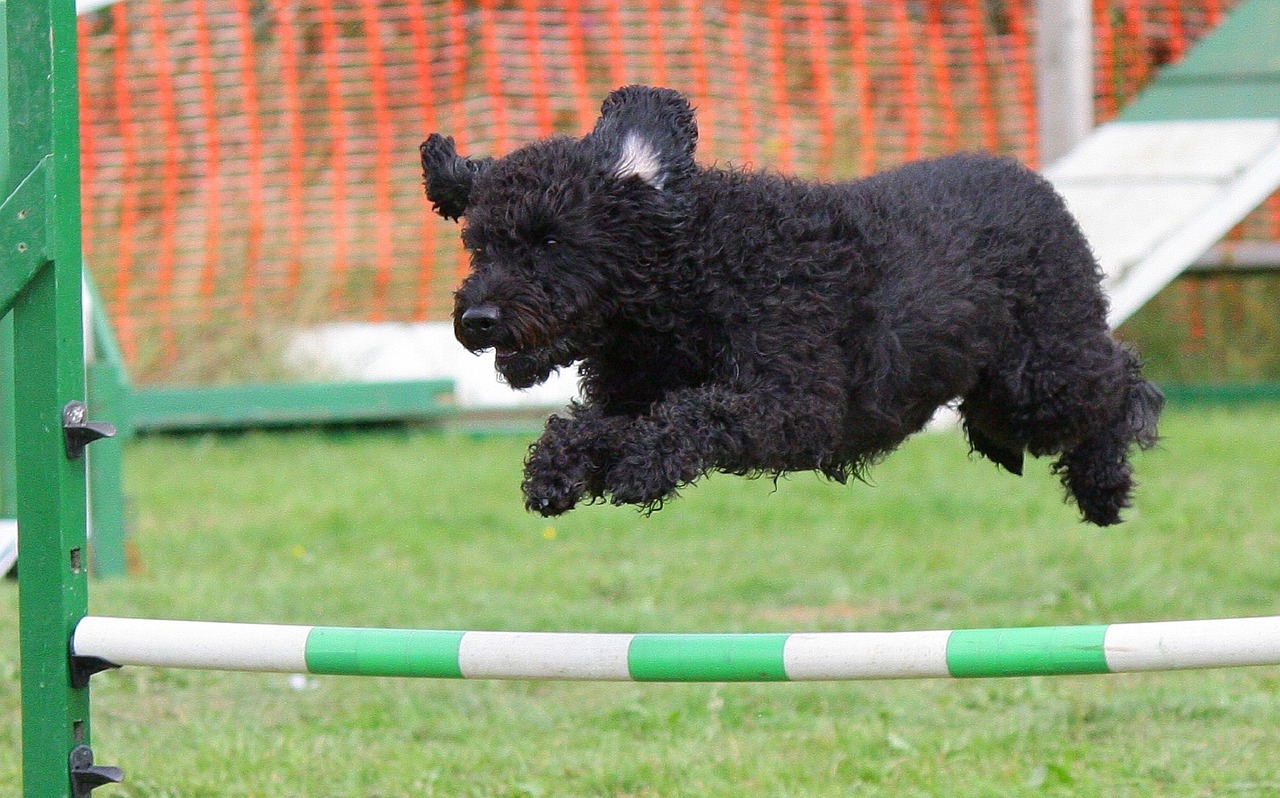
Using Positive Reinforcement
When it comes to teaching your pet the delightful trick of shaking hands, positive reinforcement is your secret weapon! This technique is all about rewarding your furry friend for their efforts, and it works wonders. Just think about it: when you get a compliment for doing something great, don’t you feel motivated to do it again? The same goes for our pets!
So, how do you effectively use positive reinforcement in your training sessions? First, it's important to choose the right rewards. Most pets respond best to treats, but praise and playtime can also work wonders. Imagine your dog’s tail wagging like a helicopter blade when you give them a tasty treat or shower them with affection after a successful attempt. It’s not just about the food; it’s about the connection you build during these moments.
Here’s a simple breakdown of how you can implement positive reinforcement:
- Timing is Everything: Reward your pet immediately after they perform the desired behavior. This helps them make the connection between the action and the reward.
- Be Consistent: Use the same rewards and phrases during each training session. Consistency helps your pet understand what you’re asking for.
- Keep it Fun: Training should be an enjoyable experience for both you and your pet. If they seem bored or distracted, change things up! A quick game of fetch or some playful interaction can reignite their interest.
As you practice, remember to celebrate even the small victories. If your pet raises their paw, even if they don’t quite get it right, shower them with praise. This encouragement builds their confidence and keeps them engaged. You might say something like, “Good job!” or “What a smart pup!”
In addition to treats and praise, consider using a clicker as a training tool. A clicker provides a distinct sound that signals to your pet they’ve done something right. Pair the click with a reward, and soon your pet will associate the sound with positive outcomes. It’s like giving them a high-five for their effort!
Lastly, always keep the training sessions short and sweet. Pets, like us, can get tired or lose focus. Aim for sessions of about 5 to 10 minutes, and don’t forget to end on a positive note, regardless of how much progress was made. This leaves your pet looking forward to the next training session!
Q: How often should I practice the shake hands trick with my pet?
A: It's best to practice several times a week, but keep sessions short—around 5 to 10 minutes—to maintain your pet's interest and enthusiasm.
Q: What should I do if my pet isn't responding to treats?
A: Try different types of treats or rewards. Some pets may prefer toys or praise over food. Experiment to find what motivates your pet the most!
Q: Can I use positive reinforcement for other tricks?
A: Absolutely! Positive reinforcement is effective for teaching various tricks and behaviors. It builds trust and strengthens the bond between you and your pet.
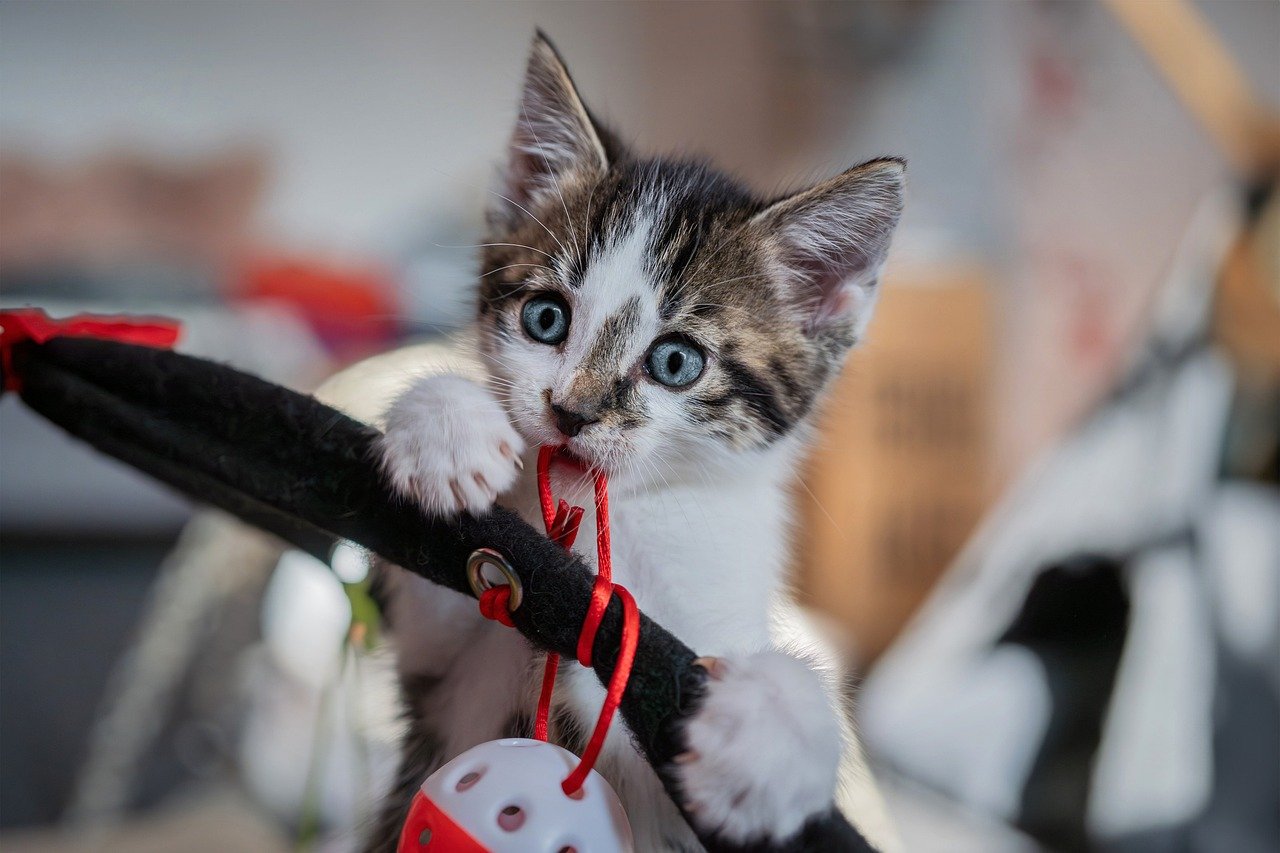
Common Challenges and Solutions
Training your pet to shake hands can be a delightful experience, but like any journey, it often comes with its share of bumps along the way. One of the most common challenges you might face is your pet's distraction. Imagine trying to study in a noisy café; it’s tough, right? Similarly, if your pet is surrounded by distractions, whether it's other pets, noises, or even the allure of a squirrel outside the window, they may struggle to focus on you. To tackle this, try to find a quiet, familiar space where your pet feels comfortable and less tempted by external stimuli. This can significantly improve their concentration and willingness to learn.
Another hurdle could be your pet's lack of interest in the training session. If your furry friend seems uninterested or bored, it could be time to rethink your approach. You might be using treats that just don’t excite them! Consider switching up your rewards. For instance, if they love a particular toy or a special treat, use that as a motivator. Experimentation is key here, and don’t hesitate to get creative! Sometimes, a little enthusiasm and a change in routine can spark their interest and make training feel like a game rather than a chore.
Moreover, it's not uncommon for pets to feel frustrated during training. If they aren't picking up the trick as quickly as you hoped, they might get discouraged. This is where your role as a patient and encouraging trainer comes in. Celebrate the small victories! If your pet lifts their paw even slightly, shower them with praise and treats. Positive reinforcement is essential. Remember, training is a marathon, not a sprint. Maintaining a calm demeanor and encouraging atmosphere will help your pet feel more secure and willing to try again.
Lastly, if your pet seems to forget the command after a few successful attempts, don’t panic! This is a natural part of the learning process. To combat this, keep practicing regularly, but also incorporate the command into daily routines. For instance, ask your pet to shake hands every time they come to you for a treat or during playtime. This repetition in different contexts can help solidify the behavior in their memory.
In summary, while challenges are a part of any training process, they can usually be overcome with a bit of creativity, patience, and understanding. Here’s a quick recap of some common challenges and their solutions:
| Challenge | Solution |
|---|---|
| Distractions | Train in a quiet, familiar environment. |
| Lack of interest | Use more appealing treats or toys. |
| Frustration | Celebrate small wins and stay calm. |
| Forgetting the command | Incorporate the command into daily routines. |
By being aware of these common challenges and employing the suggested solutions, you can create a more effective and enjoyable training experience for both you and your pet. Remember, the journey of training is just as important as the destination, so keep it fun!
Q: How long should training sessions last?
A: It's best to keep training sessions short and sweet, around 5-10 minutes. This helps keep your pet engaged without overwhelming them.
Q: What if my pet doesn’t respond to treats?
A: If your pet isn't motivated by food, try using their favorite toy or lots of verbal praise instead. Every pet is unique, so find what works best for yours!
Q: Can all pets learn to shake hands?
A: Most pets can learn this trick with patience and practice. However, some may take longer than others, so don’t get discouraged!
Q: How often should I practice?
A: Regular practice is key! Aim for a few short sessions each week to reinforce the behavior.

Maintaining Consistency and Patience
When it comes to teaching your pet to shake hands, consistency and patience are your best friends. Just like humans, pets thrive on routine and clarity. Imagine trying to learn a new dance without a consistent rhythm or a clear instructor—it's nearly impossible, right? The same goes for our furry companions. If you want to see progress, you need to establish a regular training schedule. Aim for short, daily sessions rather than infrequent, longer ones. This keeps your pet engaged without overwhelming them.
It’s essential to maintain a calm and positive demeanor during training sessions. Pets can pick up on our emotions, so if you’re feeling frustrated or rushed, they might sense that and become anxious or distracted. Instead, approach each session with a sense of enthusiasm and encouragement. Celebrate the small victories, whether it’s a paw lift or a full shake. Every little step counts!
Consider creating a simple training chart to track progress. This can help you stay organized and maintain a sense of accomplishment. Here’s a quick example:
| Date | Session Notes | Pet's Response |
|---|---|---|
| 10/01/2023 | First session, introduced the command | Curious, attempted to lift paw |
| 10/02/2023 | Focused on rewarding paw lifts | Successfully shook hands! |
| 10/03/2023 | Reinforced command with treats | Responded well, eager to participate |
This chart not only serves as a reminder of your pet’s progress but also keeps you motivated. Remember, every pet learns at their own pace. Some may pick up the trick quickly, while others might need a bit more time. If your pet seems to be struggling, don’t hesitate to take a step back and reassess your training techniques. Are the sessions too long? Is your pet getting distracted? Adjusting your approach can make a world of difference.
In conclusion, maintaining consistency and patience is crucial in teaching your pet to shake hands effectively. By sticking to a routine, staying positive, and tracking progress, you’ll not only enhance your pet’s learning experience but also strengthen the bond you share. So, take a deep breath, keep the treats handy, and enjoy the journey of learning together!
- How long will it take for my pet to learn to shake hands?
Every pet is different, but with consistent practice, many can learn this trick within a few days to a couple of weeks. - What if my pet refuses to lift their paw?
Be patient! Try using a treat to encourage them to lift their paw. You can also gently lift it yourself while saying the command. - Can I teach my pet other tricks at the same time?
While it’s possible, it’s best to focus on one trick at a time to avoid overwhelming your pet.
Frequently Asked Questions
- How long does it take to teach my pet to shake hands?
The time it takes to teach your pet to shake hands varies by individual. Some pets may learn within a few sessions, while others might take a couple of weeks. Consistency and patience are key, so keep practicing regularly!
- What if my pet is not interested in treats?
If your pet isn't motivated by treats, try using their favorite toy or even verbal praise. Every pet is unique, so find what excites them and use that as a reward during training.
- Can I teach my older pet to shake hands?
Absolutely! Age is just a number when it comes to learning new tricks. Older pets can still enjoy the mental stimulation and bonding that comes from training. Just be sure to keep sessions short and fun!
- What should I do if my pet gets distracted during training?
If distractions are an issue, try moving to a quieter area with fewer stimuli. You can also practice during times when your pet is naturally more focused, like after a walk or play session.
- Is it necessary to use a clicker for training?
No, using a clicker is not mandatory, but it can be a helpful tool for marking the desired behavior. If you prefer, you can simply use verbal praise or a hand signal to reinforce your pet's actions.
- How often should I practice the shake hands trick?
Practice makes perfect! Aim for short training sessions of about 5-10 minutes, a few times a day. This keeps your pet engaged without overwhelming them, making learning enjoyable.
- What if my pet refuses to lift their paw?
If your pet is hesitant to lift their paw, try gently lifting it yourself while giving the command. Be sure to reward them immediately for any effort they make, even if it's just a slight lift!





